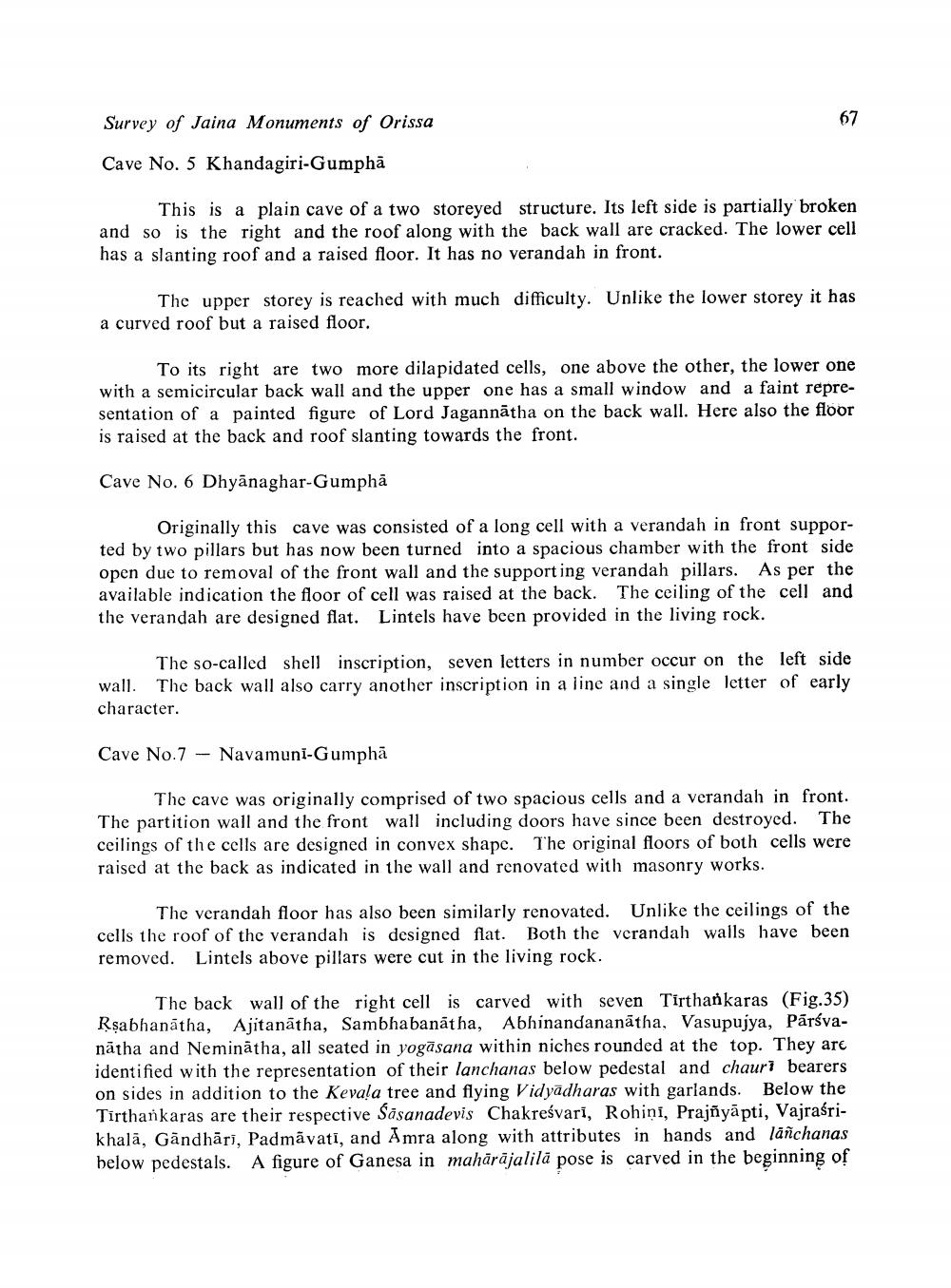________________
Survey of Jaina Monuments of Orissa Cave No. 5 Khandagiri-Gumphā
This is a plain cave of a two storeyed structure. Its left side is partially broken and so is the right and the roof along with the back wall are cracked. The lower cell has a slanting roof and a raised floor. It has no verandah in front.
The upper storey is reached with much difficulty. Unlike the lower storey it has a curved roof but a raised floor.
To its right are two more dilapidated cells, one above the other, the lower one with a semicircular back wall and the upper one has a small window and a faint representation of a painted figure of Lord Jagannātha on the back wall. Here also the floor is raised at the back and roof slanting towards the front.
Cave No. 6 Dhyānaghar-Gumphā
Originally this cave was consisted of a long cell with a verandah in front supported by two pillars but has now been turned into a spacious chamber with the front side open due to removal of the front wall and the supporting verandah pillars. As per the available indication the floor of cell was raised at the back. The ceiling of the cell and the verandah are designed flat. Lintels have been provided in the living rock.
The so-called shell inscription, seven letters in number occur on the left side wall. The back wall also carry another inscription in a line and a single letter of early character.
Cave No.7 - Navamuni-Gumphā
The cave was originally comprised of two spacious cells and a verandah in front. The partition wall and the front wall including doors have since been destroyed. The ceilings of the cells are designed in convex shape. The original floors of both cells were raised at the back as indicated in the wall and renovated with masonry works.
The verandah floor has also been similarly renovated. Unlike the ceilings of the cells the roof of the verandah is designed flat. Both the verandah walls have been removed. Lintels above pillars were cut in the living rock.
The back wall of the right cell is carved with seven Tirthankaras (Fig.35) Rşabhanātha, Ajitanātha, Sambhabanātha, Abhinandananātha, Vasupujya, Pārsvanātha and Neminātha, all seated in yogāsana within niches rounded at the top. They are identified with the representation of their lanchanas below pedestal and chauri bearers on sides in addition to the Kevala tree and flying Vidyadharas with garlands. Below the Tirthankaras are their respective Sāsanadevis Chakreśvari, Rohini, Prajñyāpti, Vajraśrikhalā, Gāndhāri, Padmavati, and Amra along with attributes in hands and lāñchanas below pedestals. A figure of Ganesa in mahārājalilā pose is carved in the beginning of




